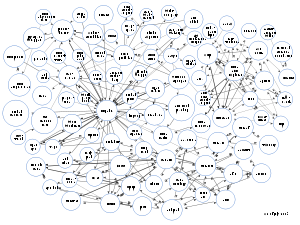In a web sense semantic means nothing more than getting machines talking to one another and understanding what is being ‘said’, which when applied to ecommerce gives us efficiencies and options that lead to (among other things) improved security and cost savings or/and better profits. In other words. lots of improvements in lots of places but many just see or focus on the benefits to search and being found in search engines (SEO).
There’s lots of technical stuff and strange language linked with the ongoing research and development behind and underpinning ‘semantic’ technologies. You’ll obviously want to see what they can do for you (see the link near the foot of the this article) but a quick jargon free perspective to give you a slightly better understanding won’t hurt.
Web semantics in part has it’s roots in the quest for artificial intelligence. Science has effectively been teaching computers to understand things and the meaning of things. And to be fair science is still trying to get it right. But we have come a long long way though in 40 odd years. Even in just the last three.
What classes as semantic or ecommerce research?
For one example, not so long ago, back in April, artificial intelligence researchers working on learning theory were trying to teach computers about regret. They
“think that by teaching computers to reduce regret, they would essentially be teaching them to evaluate all the relevant variables surrounding an outcome in advance. This would allow them to do things more efficiently …
Algorithms that can learn in real time and produce results with the least “regret”…”
What’s that got to do with search and commerce?
Many people with an online business presence don’t give a second thought to how things are stored and found on the web, they just ‘know’ their business needs to be found on Google and preferably on the first page, at the top.
Business owners might associate with the word ‘algorithms’ or updates as something that affects their search rankings or like-ability in search results pages. Some may even associate them with mobile and social networks, social media or all of the other very broad customer communication channels in general. Just think all things digital, getting data from A to B, how can it be filtered and by who?
Will current SEO marketing practices suffer search regret soon?
Can smart thinking solve the being found problem or ease the blow?
In this video Google talk about some of the improvements to its search algorithm. Read on after watching for something they don’t tell you.
It may have seemed obscure at first, reading about ‘teaching computers regret’ while trying to explain how ‘semantic technologies‘ will help your business. Consider then just for a moment another headline back in April (2011);
Working with funding from Google. Tel Aviv University hope to make computers understand what it’s like to pursue an outcome only to be disappointed
That headline came from Programming Regret for Google . (How popular was that news item? as far as I can see that page was only bookmarked in delicious 3 times – not a great indicator I know but all will become clear)
Search, like semantic development, changes daily – how often may surprise you (if you didn’t watch the video above). At the same time in April as the press release above, Scott Huffman and Amit Singhal of Google were interviewed by Glenn Chapman (AFP), there may be some posturing in the interview but a couple of bites are
“At any given time, some percentage of our users is actually seeing experiments,”
Said Huffman.
while Singhal said
“Google’s search is tweaked, on average, twice in a working day.” “We just do it in small steps that go unnoticed.”
What I found intriguing was there was no mention of the regret algorithm in that “Google hones search edge to stay sharp“ interview. In some respects with hindsight the interview plate had potatoes but no meat. Incidentally there were almost 200% more (8) Delicious bookmarks for the AFP Google interview than the ‘real news’ that day.
So about now a good question might be to ask “what would Google want you (or it) to regret?”
A better question might be
“What am I doing right already and what will I want (or need) to change soon?”
These search and find algorithms or filters that get used for displaying search results will have origins in the same realm as Natural Language Processing or NLP. Along side remember, if you work with The Web rather than trying to beat the search engines everyone benefits.
Just as there are new search algorithms there are also new web and business disciplines that have emerged and are evolving at a rapid pace because they are so effective at getting results in today’s web of data. Based on years of computational research and thinking these disciplines will or already have paths or routes of say least resistance or best effect mapped into a ‘semantic algorithm‘. No, this doesn’t mean the computers can’t do it all for you but you can make it simpler, better and more efficient for yourself and your business.
Here’s the link I mentioned earlier – The team over at Network Empire have pulled the pieces together, there is a smarter semantic way of building a web presence that works the web for you. You’ll find the answers you’ve been looking for (and more) on the inside.
Related articles
- Google Search Engine Results Page for Competing Pages – Does Google Lie? (ThemeZoom)
- Content is King But the User is the Emperor (searchenginejournal.com)




